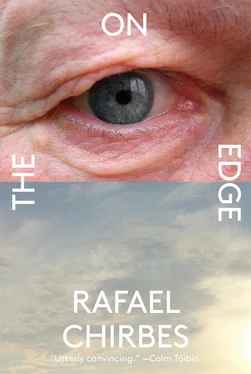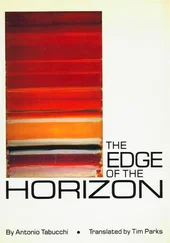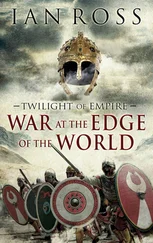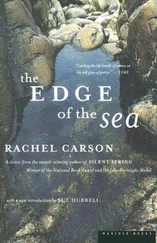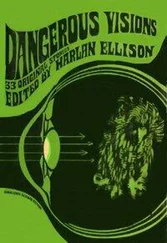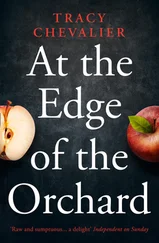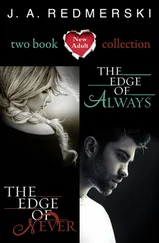Rafael Chirbes - On the Edge
Здесь есть возможность читать онлайн «Rafael Chirbes - On the Edge» весь текст электронной книги совершенно бесплатно (целиком полную версию без сокращений). В некоторых случаях можно слушать аудио, скачать через торрент в формате fb2 и присутствует краткое содержание. Год выпуска: 2016, Издательство: New Directions, Жанр: Современная проза, на английском языке. Описание произведения, (предисловие) а так же отзывы посетителей доступны на портале библиотеки ЛибКат.
- Название:On the Edge
- Автор:
- Издательство:New Directions
- Жанр:
- Год:2016
- ISBN:нет данных
- Рейтинг книги:4 / 5. Голосов: 1
-
Избранное:Добавить в избранное
- Отзывы:
-
Ваша оценка:
- 80
- 1
- 2
- 3
- 4
- 5
On the Edge: краткое содержание, описание и аннотация
Предлагаем к чтению аннотацию, описание, краткое содержание или предисловие (зависит от того, что написал сам автор книги «On the Edge»). Если вы не нашли необходимую информацию о книге — напишите в комментариях, мы постараемся отыскать её.
, even as it excoriates, pulsates with robust life, and its rhythmic, torrential style marks the novel as an indelible masterpiece.
On the Edge — читать онлайн бесплатно полную книгу (весь текст) целиком
Ниже представлен текст книги, разбитый по страницам. Система сохранения места последней прочитанной страницы, позволяет с удобством читать онлайн бесплатно книгу «On the Edge», без необходимости каждый раз заново искать на чём Вы остановились. Поставьте закладку, и сможете в любой момент перейти на страницу, на которой закончили чтение.
Интервал:
Закладка:
I nod.
The war ruined everything. I had to tell my son Germán before he went off to do his military service — doubtless to show him that I myself had fought in a great battle, but also because he would have a war of his own to fight — it will be no easy thing to keep your dignity among the fascist pigs you’ll meet in the barracks, especially when they find out who your father is. Expect the worst, I told him. When I was about ten years old, my father taught me how to carve wood, he kept me by his side while he was making some of the furniture for the house. Then he wanted me to go to school to learn more. He had chosen me. He said to Ramón: once your brother has learned, it will be your turn. I was the oldest, just as you’re the oldest now. There was an order to be followed. There wasn’t enough for all of us. At least one would be saved, and that one would have to help the others along. Once one of us is out of the water, he can throw the others the rope that will save us all. That was the agreement. I learned a few things in the months I spent at the School of Arts and Crafts, how to use a gouge for example. I don’t know whether I would have been any good, but I would like to have been a sculptor. Then the war came. The light went out. I had to abandon everything. For me, it was too late. At first, when I was in the trenches, I held fast to my ambition. I carved a few figures that I sent to my wife via a neighbor — I made my father a really beautiful key-ring, a five-pointed star with a hammer and sickle on it — they all got thrown away or buried or burned before the Nationalists arrived in Olba, because they were politically-charged images — the head of a militiaman, a fist, two crossed rifles, secular imagery, substitutes for the medallions of saints and virgins that people wore around their neck or hung on the walls before the Republic arrived. As well as medallions, I made small plates, key-rings with patriotic, revolutionary motifs. All that’s left are those little wooden figures on the sideboard, not much bigger than chessmen (a woman in profile, with her hair pulled back, a medallion showing a horse, another on which I had carved a vase of flowers). I continued making them in prison, where I would work with any piece of wood I came across; I made a chess set that kept us entertained for hours and, of course, I made spoons and forks with bits of boxwood I managed to smuggle into the cell or the block, because, at first, we weren’t even held in cells: we were all crammed into a kind of warehouse where we had to sleep taking turns because there wasn’t enough space for us all to lie down. I made key-rings and those small secular medallions that prisoners hung round their neck on a bit of string or a shoe lace: a name, an initial, a flower, a leaf from a plane tree. The political symbols had all vanished; we didn’t even think to use the symbols that had accompanied us over the last few years. It was usually the guards who gave me the wood so that I could carve something for them. When I came out of prison, though, I stopped carving altogether — I did try occasionally, I’d pick up a piece of wood, make all my preparations, but then I’d just sit staring at it like an idiot, I think it was because everything I’d lost would suddenly rise up before me. It was like reliving the whole experience. I said to Germán: Look, I may have failed, but you could be a great cabinetmaker, I can’t afford to send you to art school, as I would have liked, but I’ll show you everything I know, all the rudiments, and the rest you’ll pick up as you go along, you’ll see. Who knows, maybe one day, we’ll be able to afford to pay for some courses or you could go and become an apprentice to some master cabinetmaker. Perhaps when you come back from military service, and with your brother helping me in the workshop, we’ll be able to afford to send you to art school.
That was the first time I’d spoken plainly to one of my children about what had happened to me during the war. He gave me a hard look and said:
“But I don’t want to be a cabinetmaker, and when I’ve finished my military service, I have no intention of working here or studying. Besides, my military service isn’t going to involve going into battle, this is peacetime, they won’t be sending me off to war, but to a barracks, and I see that more as an opportunity than a punishment, it’s a way of leaving home, escaping from Olba, meeting people, getting some training, because I’m going to get my driver’s license there, an all-purpose one for buses, trucks, everything, and then I’m going to ask if they can put me in the repair shop, so that when I get out, I can set up my own garage and become a mechanic. Military service will be like school for me. I’ve got it all planned. I can learn everything I need to know there.”
My eyes clouded over. It was all I could do not to slap him. I was torn between giving him a good beating and bursting into tears.
“Well, it’s up to you,” I said.
This son of mine has inherited his mother’s lack of guts, although I don’t think it’s really a matter of genetics, but more the times we live in. And the others? At least Esteban should turn out like me, even though physically we’re so very different. He’s more heavily built, a different physique altogether — he’s stronger and more imposing than Germán. I don’t know how bright he is, but he certainly has the physique of a man who can contain his will and his anger. But it irritates me to see him hanging around with that Marsal boy, I don’t trust that family an inch, I don’t even dare to tell him about what went on in the war, just in case he mentions it to his friend. He says they go to the Marsal house and listen to music. I told him I don’t want him to go there again, but he probably won’t pay any attention. I’ll have to talk to him one day and tell him how things were. And just who his friend’s father really is — so polite, so proper, butter wouldn’t melt in his mouth. And this business with Germán doesn’t help. As for Juan, I don’t know what to think, he’s too much of a child, and not just because he’s the youngest. But, as I say, what do body types or genes matter? All the children have lost the heads they were born with and been fitted with new ones, tailor-made — yes, it’s still going on. I live in my house with my wife and my children, and I feel like a stranger. It makes me ashamed to write this, but it’s as if I were surrounded by enemies in my own house. I so miss the conversations I used to have with my father, and with my friend Álvaro, but they’re both gone. Álvaro was a broken man when he came out of prison, I had a hard time too, but, perhaps I was luckier or just stronger, because when he got out, he was so embittered and so ill that he didn’t last long. I’ve learned to live with the bitterness and somehow stop it ruining my health. Anyway, I’m from another planet. That’s my choice, though, or the only choice available to me.
Stone carving seemed somehow a superior art, it frightened me, made me take a step back. Stone, I felt, was for truly great artists, and I really didn’t feel I qualified. Wood was different, I’d lived with wood my whole life, but stone was something else entirely. I told the teacher that I didn’t want to learn what he was asking me to learn. I felt I didn’t have the skills. I just couldn’t do it. The teacher tried to talk me around, saying that appearances can be deceptive: you’re the one in charge of the stone, you pick up the mallet and the chisel and you patiently measure and shape and work, file and rasp and polish: the stone is a compact mass that you can split or pierce using your own strength and with the help of the right tools. Sculptors can make anything out of stone, even the finest filigree. In Bernini’s statues of women, the stone becomes soft flesh into which a man can plunge his strong fingers. As with wood, the main thing with stone is to get to know it, know how to choose it, to know its density, its qualities, how it will behave, although that’s something we can never entirely predict. My teacher was right. The important thing with wood is to know how to season it, how to work it when it’s just dry enough, how to follow the grain, although nowadays I don’t know if even sculptors bear those things in mind, and, of course, we carpenters now work with wood we know nothing about, where it came from or how it was treated. Some stone is so very hard and so very difficult to work with — my teacher told me — that you’d think any statues made from it would be condemned to eternal life, but in no time at all they get worn away by water or changes in temperature or bacteria or fungus. Other types of stone, like the sort we saw in Salamanca, actually get harder when exposed to the elements. Salamanca was the one class trip we made during the Republic, thanks to a grant given by a Swedish or Dutch foundation, I can’t remember which now. But I’ve never forgotten that city, it was like a magnificent open-air sculpture museum made of a stone that can withstand the elements: San Esteban, the Cathedral, the university façade, the Patio de las Dueñas. The extraordinary sculpted figures covering entire façades, the beautiful color of the stone that changes with the light, pale in the morning and an intense coppery gold in the evening. Almost five hundred years after they were first carved, they’re still intact thanks to the quality of the stone, called Villamayor after the village where the quarry is located and from which they extract a stone that’s easy to carve when it’s just been cut, but which, with exposure to the weather and the passing of time, forms a kind of patina which, instead of attacking or dissolving the stone, as happens with other kinds of sandstone, preserves and even hardens it. It’s nearly thirty years since I saw Salamanca and yet, if I close my eyes, I think I can still see it.
Читать дальшеИнтервал:
Закладка:
Похожие книги на «On the Edge»
Представляем Вашему вниманию похожие книги на «On the Edge» списком для выбора. Мы отобрали схожую по названию и смыслу литературу в надежде предоставить читателям больше вариантов отыскать новые, интересные, ещё непрочитанные произведения.
Обсуждение, отзывы о книге «On the Edge» и просто собственные мнения читателей. Оставьте ваши комментарии, напишите, что Вы думаете о произведении, его смысле или главных героях. Укажите что конкретно понравилось, а что нет, и почему Вы так считаете.
